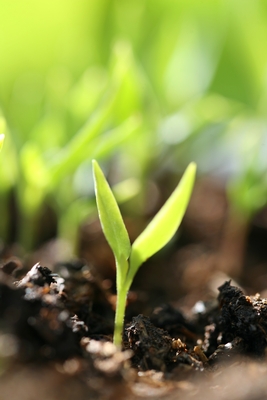 There are few things more frustrating than preparing, planting and pampering a bed of peas or beans and then discovering that the newly germinated seedlings have all been wiped out by birds.
There are few things more frustrating than preparing, planting and pampering a bed of peas or beans and then discovering that the newly germinated seedlings have all been wiped out by birds.
In most places birds are only a significant problem in spring when they seem to relish the abundant succulent green seedlings, but in my garden quail can be a problem anytime. In winter they go for the Brassicas, in summer they like any succulent greens, and in fall they eat newly sown, or emerging, cover crops. I’ve learned the hard way if I leave a seedbed unprotected I am pretty much wasting my time, as I will be lucky to harvest anything from it.
Tips on how to protect your plants:
Easy: The easiest method to keep birds away is to use scare tactics such as flashing tape, hanging old CDs, scarecrows, and predator balloons. The problem with these is that birds will eventually get used to them and start to ignore them, though they may work long enough for your planting to grow out of its most vulnerable stage.
Functional: The usual solution to serious bird predation is plastic netting. This is awkward to handle and put up (it’s an extra step after planting that you don’t need), and somewhat hazardous to wildlife (I have released several tangled snakes) but in these circumstances it is a necessary evil. I usually support the netting on hoops made from lengths of discarded ½” polyethylene irrigation pipe, weighted down at the edges with wood or soil. It’s not particularly elegant, but its quick and it works.
Extreme: In the most extreme cases you might decide to cage the whole garden (especially if you are also plagued by rabbits, deer, squirrels, or raccoons). The simplest and cheapest way to do this is to put an 8 foot tall chicken wire fence around the garden and make a roof out of plastic bird netting.


